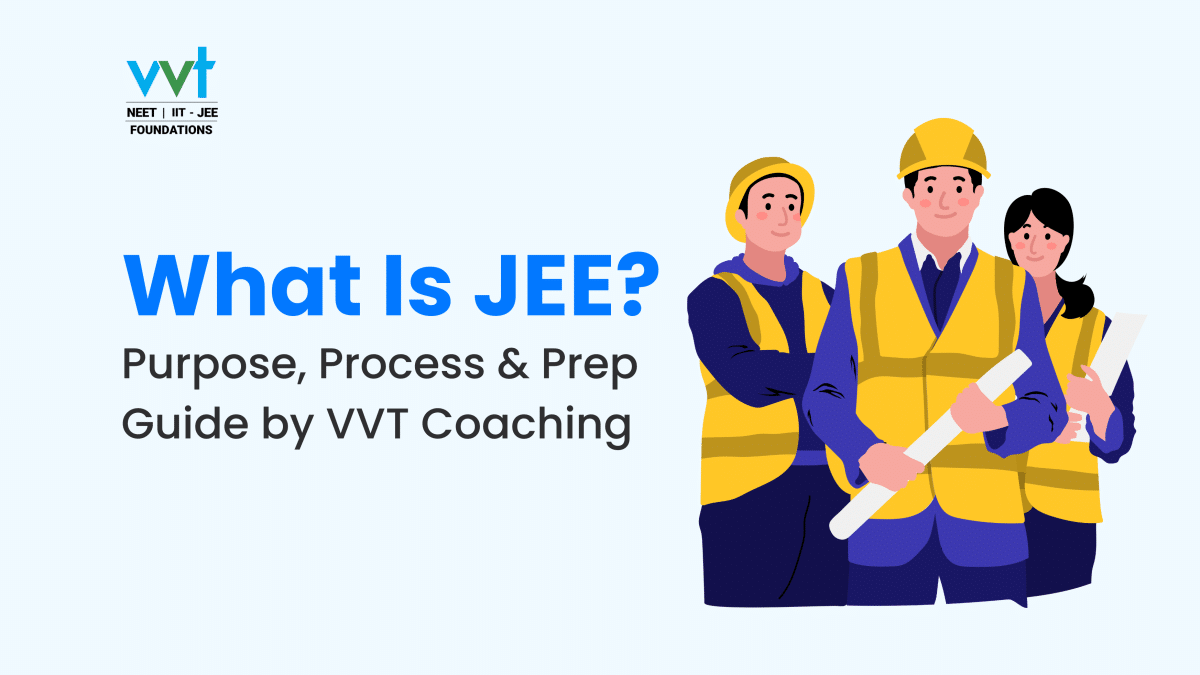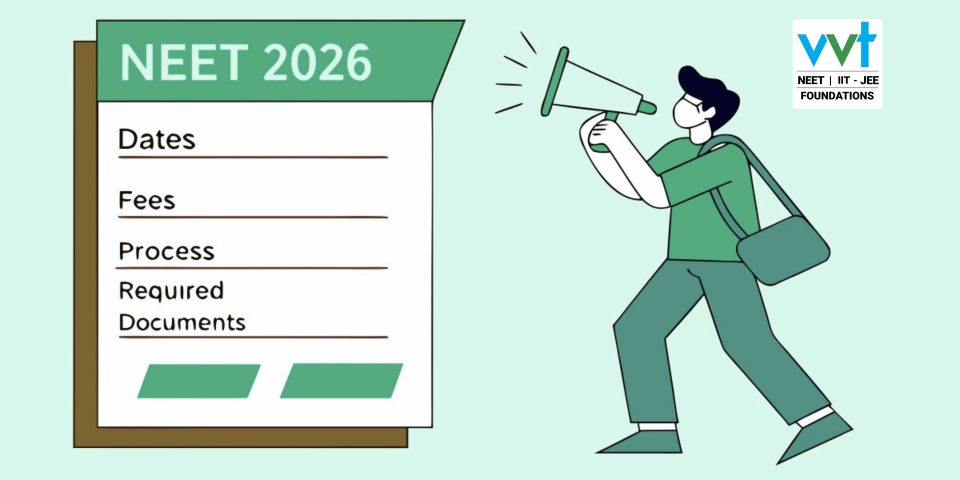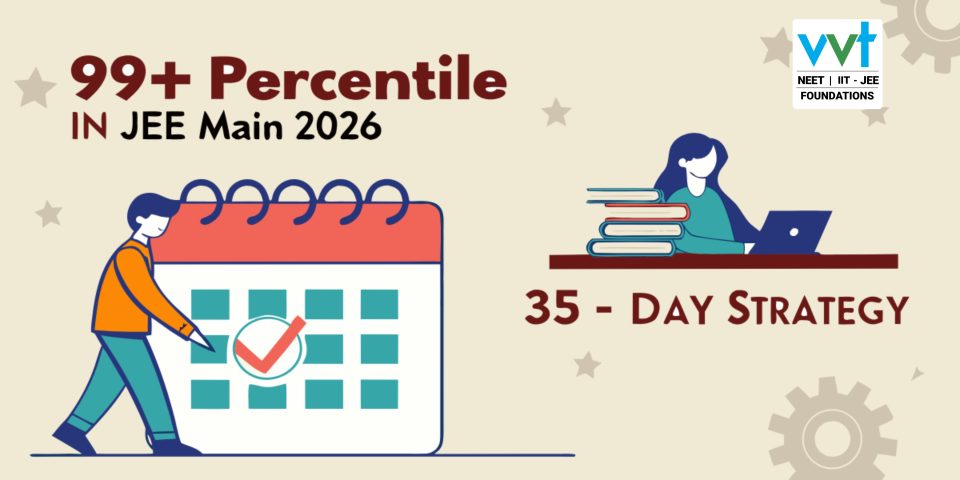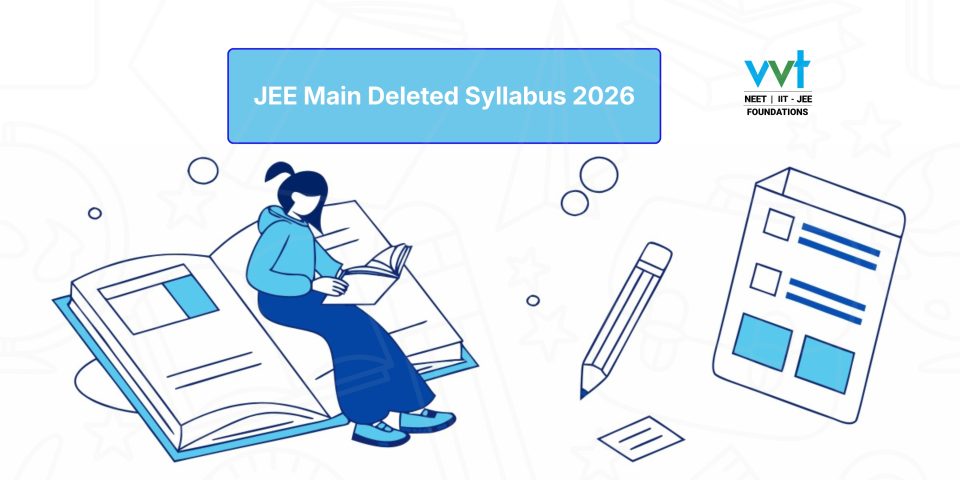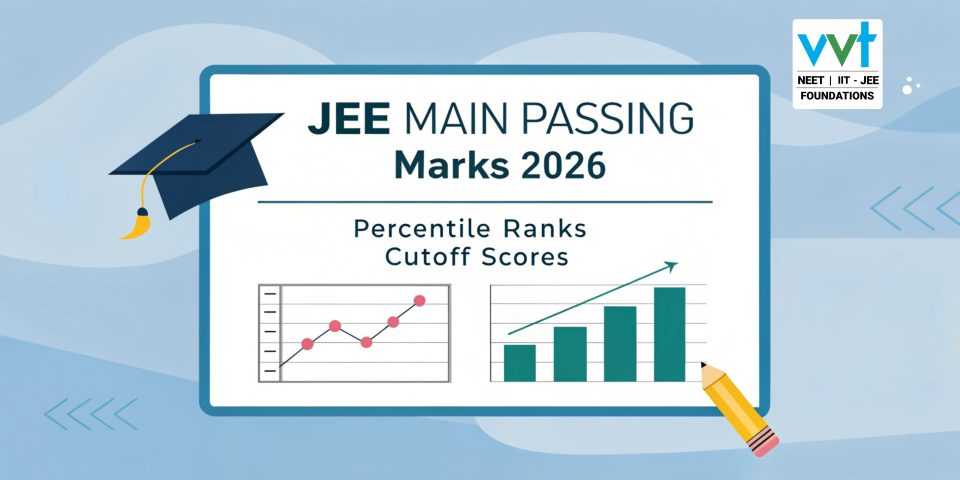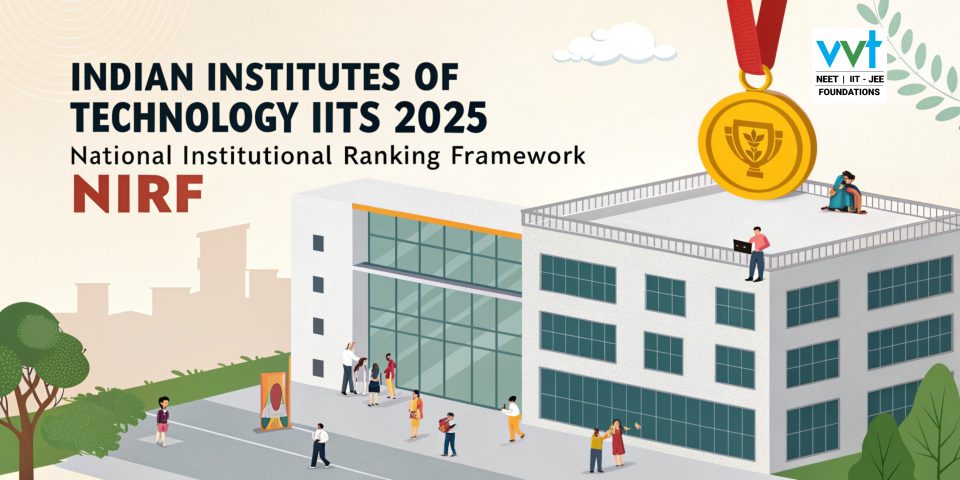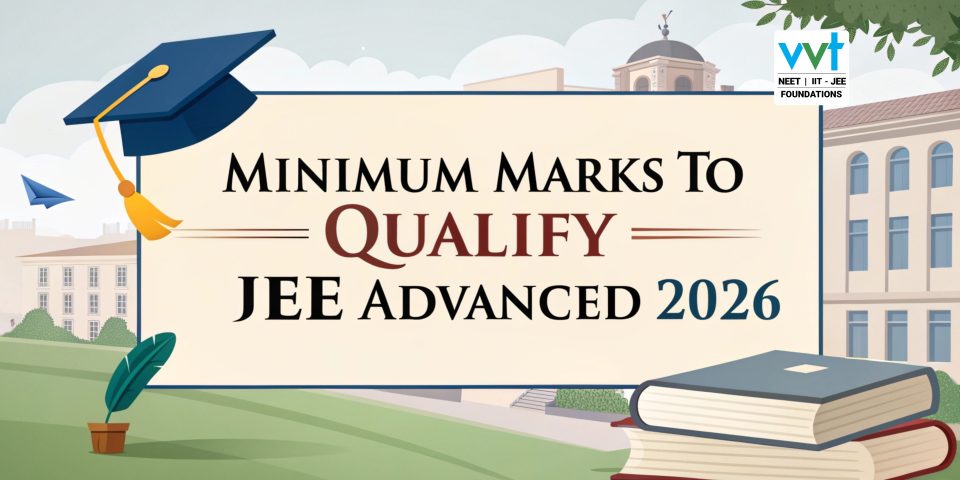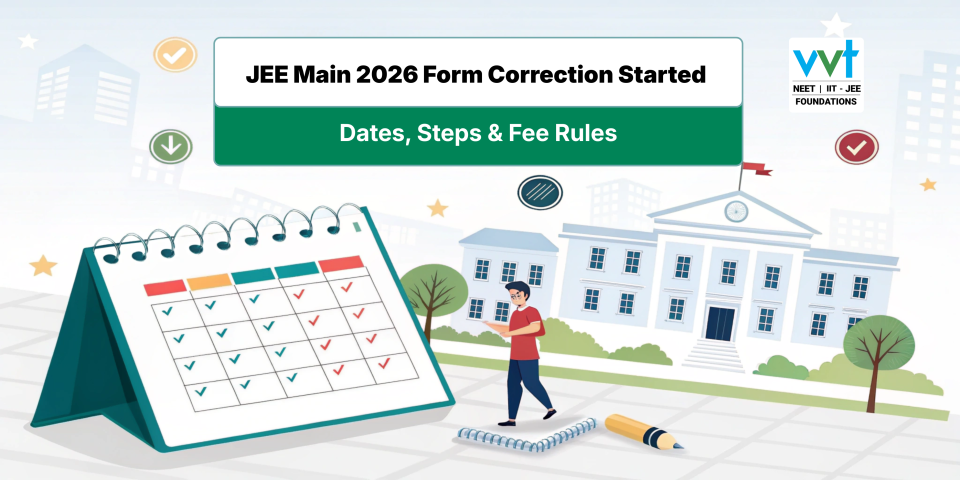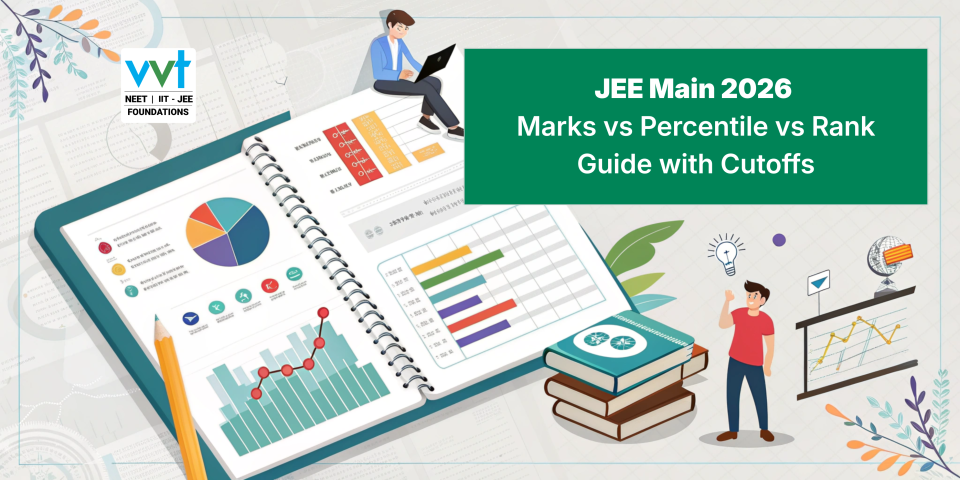
NEET 2025 Admit Card Released: Step-by-Step Guide to Download Your Hall Ticket!
May 3, 2025
How to Choose the Best NEET Coaching Courses for Your Medical Career!
May 7, 2025What Is JEE: Purpose, Process, & Everything You Need to Know with VVT Coaching
VVT Coaching Chennai – Ranked #1 Best NEET Coaching Centre by Times Now!
The Joint Entrance Examination (JEE) is India’s leading engineering entrance exam, paving the way to elite institutions like the Indian Institutes of Technology (IITs), National Institutes of Technology (NITs), and Indian Institutes of Information Technology (IIITs). Administered by the National Testing Agency (NTA), JEE draws over 12 lakh candidates each year, marking it as one of the world’s most competitive exams.
This detailed guide dives into what JEE entails, its purpose, the examination process, and how VVT Coaching can be your key to success in this challenging journey.
What Is JEE?
The Joint Entrance Examination (JEE) is a national-level assessment for admission into undergraduate engineering programs across India. It consists of two stages:
- JEE Main: Held twice annually (January and April), this exam is the gateway to NITs, IIITs, and other Government Funded Technical Institutes (GFTIs). It also qualifies candidates for JEE Advanced.
- JEE Advanced: Conducted once a year (usually in May), this exam is the sole route to the 23 IITs, renowned for their exceptional education and global prestige.
JEE evaluates students’ mastery of Physics, Chemistry, and Mathematics, ensuring only the brightest minds secure spots in India’s top engineering colleges.
Purpose of JEE
JEE’s core mission is to identify talented candidates for engineering programs based on their knowledge, problem-solving skills, and analytical abilities. Its key purposes include:
- Merit-Based Selection: Filters students with strong fundamentals for admission to premier institutes.
- Standardized Evaluation: Offers a consistent framework to assess candidates from varied educational backgrounds.
- Access to Top Institutes: Unlocks opportunities at IITs, NITs, and other esteemed colleges with stellar career prospects.
- Fostering Excellence: Encourages students to hone critical skills vital for engineering success.
JEE Main vs. JEE Advanced
Here’s a breakdown of how JEE Main and JEE Advanced differ:
| Aspect | JEE Main | JEE Advanced |
| Conducting Body | National Testing Agency (NTA) | One of seven zonal IITs (rotational) |
| Eligibility | Class 12 passed or appearing | Top 2.5 lakh scorers in JEE Main |
| Exam Mode | Computer-Based Test (CBT) | Computer-Based Test (CBT) |
| Subjects | Physics, Chemistry, Mathematics | Physics, Chemistry, Mathematics |
| Number of Questions | 90 (30 per subject) | 54 (18 per subject, across two papers) |
| Marking Scheme | +4 for correct, -1 for incorrect | +3 for correct, -1 for incorrect |
| Purpose | Admission to NITs, IIITs, GFTIs | Admission to IITs |
| Frequency | Twice a year (January, April) | Once a year (May) |
Eligibility Criteria
To take JEE, candidates must meet the following criteria:
- JEE Main:
- Educational Qualification: Must have passed Class 12 or equivalent with Physics, Chemistry, and Mathematics.
- Age Limit: No age restriction, but candidates must have appeared for Class 12 in 2023, 2024, or 2025.
- Attempts: No cap on attempts, with eligibility spanning three consecutive years.
- JEE Advanced:
- Qualification: Must rank in the top 2.5 lakh of JEE Main scorers.
- Age Limit: Born on or after October 1, 2000 (relaxed by 5 years for SC/ST/PwD candidates).
- Attempts: Limited to two attempts in consecutive years.
Exam Pattern
JEE Main
- Paper 1 (B.E./B.Tech):
- Duration: 3 hours
- Questions: 90 (30 each from Physics, Chemistry, Mathematics)
- Marking: +4 for correct, -1 for incorrect, 0 for unattempted
- Total Marks: 300
- Paper 2A (B.Arch): Covers Mathematics, Aptitude Test, and Drawing Test.
- Paper 2B (B.Planning): Includes Mathematics, Aptitude Test, and Planning-Based Questions.
JEE Advanced
- Structure: Two papers (Paper 1 and Paper 2) on the same day with a break.
- Questions: 54 total (18 per subject per paper).
- Marking: Varies by question type; typically +3 for correct, -1 for incorrect.
- Duration: 3 hours per paper.
Syllabus
The JEE syllabus aligns with the NCERT curriculum for Classes 11 and 12, with added topics. Highlights include:
- Physics: Mechanics, Thermodynamics, Electromagnetism, Optics, Modern Physics.
- Chemistry: Physical Chemistry (Mole Concept, Thermodynamics), Organic Chemistry (Hydrocarbons, Functional Groups), Inorganic Chemistry (Periodic Table, Coordination Compounds).
- Mathematics: Algebra, Calculus, Coordinate Geometry, Trigonometry, Probability.
Preparation Tips
Success in JEE demands a disciplined strategy. Consider these tips:
- Know the Syllabus: Study the syllabus and exam pattern to focus on high-weightage areas.
- Start with NCERT: Build a strong base, particularly in Chemistry, using NCERT textbooks.
- Supplement with References: Use books like Concepts of Physics by H.C. Verma (Physics), Organic Chemistry by O.P. Tandon (Chemistry), and Objective Mathematics by R.D. Sharma (Mathematics).
- Practice Consistently: Solve past papers and mock tests to enhance speed and accuracy.
- Manage Time: Develop a balanced study plan with time for each subject and revision.
- Seek Expert Guidance: Partner with VVT Coaching for structured support and expert insights.
Why Choose VVT Coaching?
VVT Coaching is your trusted ally in conquering JEE.
Here’s what sets us apart:
- Expert Faculty: Our instructors deliver top-tier guidance and mentorship.
- Tailored Study Materials: We provide comprehensive notes, practice questions, and test series synced with the latest JEE format.
- Individual Focus: Small batches ensure personalized attention and progress monitoring.
- Track Record of Success: Many VVT Coaching students have earned top ranks in JEE Main and Advanced, securing seats in IITs and NITs.
- Mock Tests & Support: Regular mock exams mimic real test conditions, complemented by dedicated doubt-clearing sessions.
Admission Process
Post-JEE, candidates enter the Joint Seat Allocation Authority (JoSAA) counseling:
- JEE Main: Qualifiers apply for NITs, IIITs, and GFTIs via JoSAA based on rank.
- JEE Advanced: Successful candidates choose IIT seats through JoSAA, prioritizing colleges and courses.
- Counseling Rounds: Multiple rounds allocate seats fairly by rank and preference.
Conclusion
The Joint Entrance Examination is a rigorous yet transformative stepping stone to India’s finest engineering institutes. With dedication and the right support, it’s a challenge you can master. VVT Coaching is here to guide you every step of the way with expert resources, proven strategies, and a commitment to your success.
Begin your JEE journey with VVT Coaching and unlock your engineering future!
Also Check:
- How to Prepare for the NEET Test From Class 11 Itself?
- 2-Year Preparation Strategy to Crack NEET 2027
- Understanding NEET 2025: Total Marks, Passing, and Qualifying Marks
FAQs
1.What’s the difference between JEE Main and JEE Advanced?
JEE Main targets NITs, IIITs, and other institutes, while JEE Advanced is for IITs only.
2.Can I take the JEE Main multiple times?
Yes, it’s offered twice yearly (January and April), with attempts allowed over three consecutive years.
3.Is coaching essential for JEE?
While not required, coaching boosts preparation. VVT Coaching offers customized support for JEE aspirants.
4.What’s the JEE Advanced cutoff?
It varies annually, typically around 75-80% for the General category, based on exam difficulty and performance.

